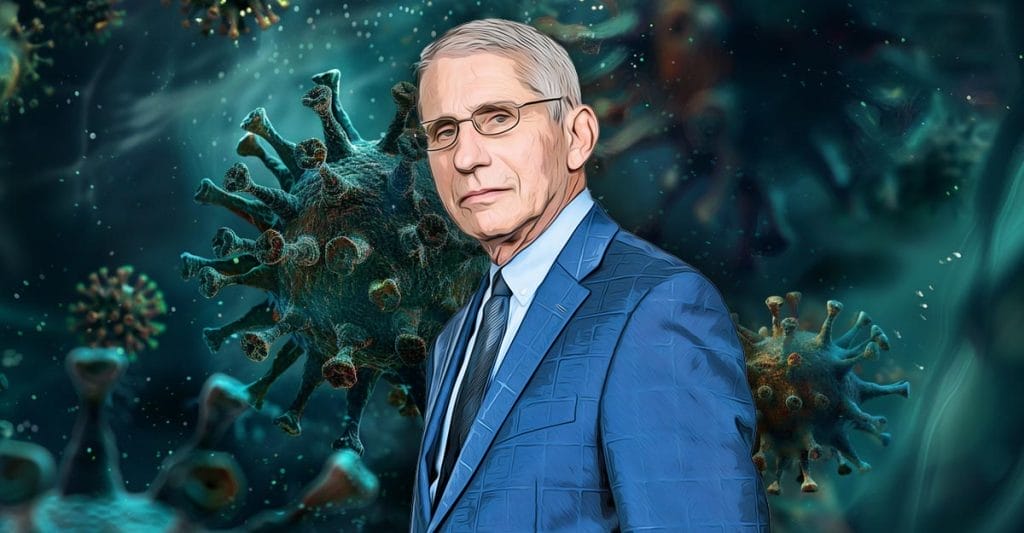In light of National Institutes of Health’s (NIH) recent failure to detect or prevent misuse of grant funding, Health and Oversight Subcommittee Republicans are requesting that the Government Accountability Office (GAO) study NIH’s effectiveness in overseeing such funding.
At issue is taxpayer money awarded to the controversial nonprofit EcoHealth Alliance, which engaged in risky partnerships with the Communist Chinese involving gain of function research on bat coronavirus. That research has been linked to the Covid-19 pandemic.
The following information is from the Committee.
Background Information:
NIH is one of the top research and development funding agencies—particularly for biomedical research.
NIH’s program level funding for Fiscal Year 2023 as enacted is $47.678 billion.
In fiscal year 2020, the agency obligated nearly $43 billion for research in areas such as infectious disease prevention, cancer treatment, and mental health.
NIH obligated as much as 80 percent of these funds towards extramural research, performed by outside organizations including universities, medical centers, and other research institutions.
Organizations receiving extramural research awards from NIH may, in turn, award sub-grants for a portion of the work.
As highlighted in HHS OIG and GAO reports, the use of sub-grants may further complicate the management and oversight of NIH research funds.
Key Excerpts:
“A January 2023 report by the Office of Inspector General within the Department of Health and Human Services (HHS OIG) detailed failures by NIH to monitor effectively its grants with EcoHealth Alliance, a nonprofit research organization. According to that report, the organization had overcharged the government for its services and improperly used federal grant funds. Further, a July 2023 report by the Government Accountability Office (GAO) raised similar concerns about NIH’s oversight of grant recipients and recommended that NIH make improvements to its oversight processes.” […] “In light of the recent problems in NIH’s oversight and the scale of NIH’s funding of extramural research awards, more transparency is needed about NIH’s policies and procedures as well as its effectiveness in overseeing financial management of its extramural research awards.”
The Chairs requested answers to the following questions by September 29, 2023:
- How much funding did NIH provide—using grants, cooperative agreements, or other award mechanisms—for extramural research since fiscal year 2014?
- For the same time frame, what resources did NIH and each of its institutes and centers have to conduct financial management oversight?
- What are the trends in award funding including, for example, the research areas and types/characteristics of award recipients funded; the number, size, and duration of awards; the types of award mechanisms used?
- What policies, procedures, and processes does NIH follow to administer and oversee its extramural research awards using grants, cooperative agreements, or other award mechanisms?
- How do policies, procedures, and processes differ among the NIH institutes and centers in administering and overseeing extramural research awards?
- To what extent is NIH, consistent with its policies and procedures, ensuring effective financial management oversight of extramural research funding throughout the award life cycle?
- What are the roles and responsibilities of those involved in such oversight including the award recipient?
- How, if at all, does NIH’s oversight of extramural research funding differ for intramural research funding?
- What internal assessments, if any, does NIH conduct to provide reasonable assurance that funds are being used as intended—including that proposed rates and costs are reasonable and funds are being used appropriately?
- How much money has NIH recovered as a result of such internal assessments?
- What changes, if any, has NIH implemented based on the findings and lessons learned from such assessments?
- What data does NIH collect on the findings and results of its internal assessments?
- Are there data gaps, and can these gaps be addressed?
- What are the lessons learned or best practices from institutes and centers that could be implemented across NIH?
Read full letter below or here.
September 15, 2023
The Honorable Gene L. Dodaro Comptroller General of the United States U.S. Government Accountability Office 441 G Street, N.W.
Washington, D.C. 20548
Dear Mr. Dodaro,
Recent reports of the National Institutes of Health (NIH) have raised questions about the agency’s effectiveness in monitoring and overseeing the funding it awards for extramural research. A January 2023 report by the Office of Inspector General within the Department of Health and Human Services (HHS OIG) detailed failures by NIH to monitor effectively its grants with EcoHealth Alliance, a nonprofit research organization.1 According to that report, the organization had overcharged the government for its services and improperly used federal grant funds. Further, a July 2023 report by the Government Accountability Office (GAO) raised similar concerns about NIH’s oversight of grant recipients and recommended that NIH make improvements to its oversight processes.2
NIH is one of the top research and development funding agencies—particularly for biomedical research. NIH’s program level funding for Fiscal Year 2023 as enacted is $47.678 billion.3 In fiscal year 2020, the agency obligated nearly $43 billion for research in areas such as infectious disease prevention, cancer treatment, and mental health. NIH obligated as much as 80 percent of these funds towards extramural research, performed by outside organizations including universities, medical centers, and other research institutions. Organizations receiving extramural research awards from NIH may, in turn, award sub-grants for a portion of the work.
1HHS-OIG, The National Institutes of Health and EcoHealth Alliance Did Not Effectively Monitor Awards and Subawards, Resulting in Missed Opportunities to Oversee Research and Other Deficiencies. A-05-21-00025. (Jan. 2023).
2GAO, Federal Research: NIIH Could Take Additional Actions to Manage Risk Involving Foreign subrecipients, GAO-23-106119. (Washington, D.C.: Nov. 15, 2022).
3 Congressional Research Service, National Institutes of Health (NIH) Funding: FY1996-FY2024 (Updated May 17, 2023), https://www.crs.gov/reports/pdf/R43341/R43341.pdf
The Honorable Gene L. Dodaro Page 2
As highlighted in the HHS OIG and GAO reports, the use of sub-grants may further complicate the management and oversight of NIH research funds.
In light of the recent problems in NIH’s oversight and the scale of NIH’s funding of extramural research awards, more transparency is needed about NIH’s policies and procedures as well as its effectiveness in overseeing financial management of its extramural research awards. We request GAO conduct a study that evaluates the following areas:
1. How much funding did NIH provide—using grants, cooperative agreements, or other award mechanisms—for extramural research since fiscal year 2014? For the same time frame, what resources did NIH and each of its institutes and centers have to conduct financial management oversight?
a. What are the trends in award funding including, for example, the research areas and types/characteristics of award recipients funded; the number, size, and duration of awards; the types of award mechanisms used?
- What policies, procedures, and processes does NIH follow to administer and oversee its extramural research awards using grants, cooperative agreements, or other award mechanisms? How do policies, procedures, and processes differ among the NIH institutes and centers in administering and overseeing extramural research awards?
- To what extent is NIH, consistent with its policies and procedures, ensuring effective financial management oversight of extramural research funding throughout the award life cycle?
- What are the roles and responsibilities of those involved in such oversight including the award recipient?
- How, if at all, does NIH’s oversight of extramural research funding differ for intramural research funding?
- What internal assessments, if any, does NIH conduct to provide reasonable assurance that funds are being used as intended—including that proposed rates and costs are reasonable and funds are being used appropriately?
- How much money has NIH recovered as a result of such internal assessments?
- What changes, if any, has NIH implemented based on the findings and lessons learned from such assessments?
- What data does NIH collect on the findings and results of its internal assessments? Are there data gaps, and can these gaps be addressed?
- What are the lessons learned or best practices from institutes and centers that could be implemented across NIH?
The Honorable Gene L. Dodaro Page 3
Thank you for your attention to this important matter. If you have any questions, please contact the Majority Committee Staff at (202) 225-3641.
Sincerely,
Cathy McMorris Rodgers, Chair
Committee on Energy and Commerce
Brett Guthrie, Chair
Subcommittee on Health
Morgan Griffith, Chair
Subcommittee on Oversight and Investigations
CC: Frank Pallone Jr., Ranking Member, Energy and Commerce Committee Anna Eshoo, Ranking Member, Subcommittee on Health
Kathy Castor, Ranking Member, Subcommittee on Oversight and Investigations

Visit The Sharyl Attkisson Store today
Unique gifts for independent thinkers
Proceeds benefit independent journalism



